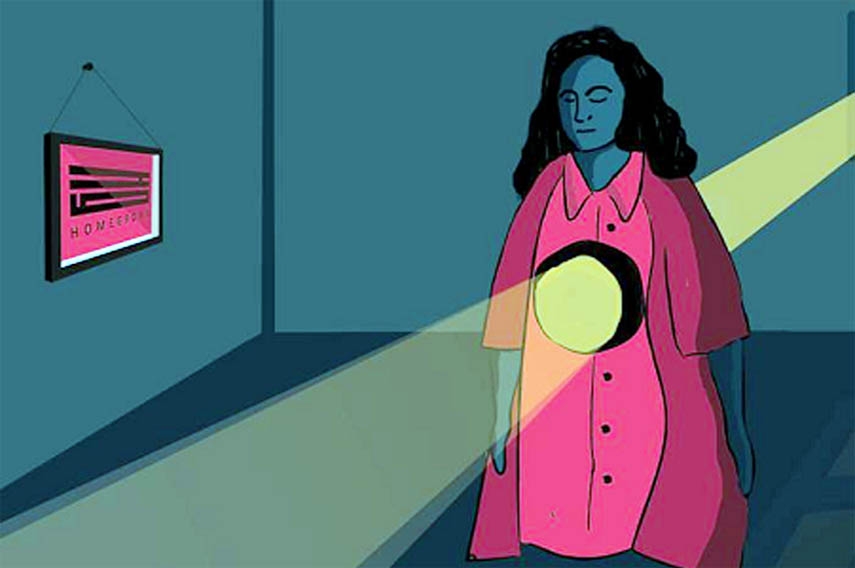
Joseph E. Davis :
In The Loneliness of the Dying, the sociologist Norbert Elias argues that in contemporary society, older persons are “pushed more and more behind the scenes of social life,” a process that intensifies their devaluation, emotional seclusion, and loss of social significance. A physical and institutional sequestering and a pervasive cultural tendency to “conceal the irrevocable finitude of human existence” have made it harder for them and those around them to relate to, understand, and interact with one another. The aged and dying are less likely to receive the help and affection they need, and they are more prone to different forms of loneliness and painful feelings of irrelevance. “Never before,” Elias writes, “have people died as noiselessly and hygienically as today in [more developed] societies, and never in social conditions so much fostering solitude.”
In recent years, the loneliness of the aged has received increasing public attention, sometimes under the rubric of an “epidemic of loneliness.” While this “epidemic” affects people at every age, much of the discussion of it, especially proposed responses, tends to focus on the elderly. Popular articles and books identify a number of social changes as contributing factors. Among these are high divorce rates, including a steady uptick in after-50 “gray divorce,” smaller families and extended-family networks, more single-member households, and fewer opportunities for social activities.
Contributors to the public discussion frame loneliness itself as a kind of medical condition or disorder: It is something one “suffers from,” that is partly heritable, that has characteristic “symptoms” and “risk factors,” can become “chronic,” and needs to be “treated.” Like other animals, such as fish, mice, and prairie voles, we “evolved to be social creatures,” these writers remind us. Therefore, literally fatal consequences can result from our “perception of isolation from others-of being on the social perimeter,” to quote social neuroscience popularizers John and Stephanie Cacioppo. Our “perceived social isolation,” the two neuroscientists write, “can still put us in self-preservation mode,” a “hangover” from our evolutionary past that is now “at odds with thriving in a modern society.” Like a lack of social ties, loneliness is found to have detrimental effects on “long-term health and well-being.” For example, Vivek Murthy, current U.S. surgeon general, reports that loneliness and isolation are “associated with a reduction in lifespan similar to that caused by smoking 15 cigarettes a day and even greater than that associated with obesity.”
In discussions of loneliness and how to “solve” this problem, virtually the entire focus is on its harmful consequences for health and longevity. These appear to be the values that really matter, and the evidently urgent need to address the epidemic flows from concerns with this harm and the costs it imposes on society. Health and longevity are the ends to which remedial action is directed and by which outcomes are evaluated. Even in discussions that include exhortations to build strong connections and communities, loneliness and isolation are treated as individual conditions, and references to community easily coexist with talk of genetic hardwiring, the role of the prefrontal cortex, and the ways in which neural mechanisms might generate feelings of loneliness. Readers are reassured that researchers are hard at work “deepening their understanding of [loneliness’s] biological underpinnings.” The hope, it seems, is that we can get rid of that “hangover” and stop feeling so much distress in the face of loneliness and social isolation. A psychoactive drug for loneliness might be a start, on which possibility, John and Stephanie Cacioppo note, “animal research is shedding light.”
In a poignant article in The Lancet, the British physician Ishani Kar-Purkayastha describes her encounters in the hospital with an old woman who, though well, had no desire to return home, where she lived her days in isolation. She asks the doctor if she has a cure for loneliness. Kar-Purkayastha writes, “I wish I could prescribe her some antidepressants and be satisfied that I had done my best, but the truth is she’s not clinically depressed. It’s just that she has been left behind by a world that no longer revolves around her, not even the littlest bit of it.”
Health consequences are a legitimate concern, of course, but this medicalized discourse of loneliness barely touches on the actual social conditions and vulnerabilities of the aged. Little or nothing is said of their practical challenges in everyday life, their loss of social significance, their isolation from the community, or their abandonment. In fact, the definitions of the “epidemic” often downplay, if not effectively deny, that the social fabric and our mutual dependence are even at issue.
Many of the recommended strategies to reduce loneliness place the burden on the lonely themselves. Typical advice is often some form of self-help: “take a class,” “get a dog,” “volunteer,” build your confidence with social skills training, seek out behavioral therapy. With therapy-highlighted for its positive “impact”-the aged lonely can be helped to see that their low self-worth, perceived isolation, or feelings of being unwanted are probably just cognitive errors that need to be “restructured.” Once this restructuring is accomplished, the aged can better match what they want in social life with what they have and get on with aging more successfully. The status quo can now appear in a new, more uplifting light. The larger world and the incomparable meaning of the company of others for people need scarcely be acknowledged. The aged, ostensibly the subject of concern, disappear.
(Joseph E. Davis is Research Professor of Sociology and Director of the Picturing the Human Colloquy of the Institute for Advanced Studies in Culture at the
University of Virginia).

